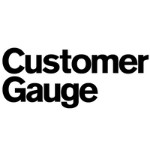Hello there, cherished reader! If you’re in the bustling world of modern business, there’s a good chance that “customer engagement metrics” is a phrase you’ve come across more than once. And if you’re scratching your head thinking, “What in the world does that mean?”, or perhaps you’re looking for ways to harness its potential better, then you’re in for a treat!
Let’s set the stage first. Imagine you’re in a bookstore, wandering through the aisles, browsing through the titles. Suddenly, a friendly staff member comes over, recommends a bestseller, chats with you about your favorite genres, and even tells you about their upcoming sale. Now, this interaction, this connection you felt, is what a customer engagement metric is all about. But how do businesses capture the essence of such moments on a large scale? Enter: customer engagement metrics.
When businesses scale, personal interactions might get lost in the noise. But that essence, that feeling of being valued, is what brands strive to replicate across all customer touchpoints, be it through a website, social media, emails, or even support chats. And every single interaction, click, like, share, and comment is a piece of a jigsaw puzzle. When pieced together, these form a vivid picture of how a customer perceives a brand. Customer engagement metrics are the tools that help businesses collect, analyze, and understand these pieces.
In today’s session, we’ll be unraveling the magic behind these metrics. Together, we will:
Decipher what these metrics truly are, going beyond the jargon.
Discover their profound impact on businesses, both big and small.
Delve into ways to measure them accurately and use the insights for growth.
Determine strategies to enhance these metrics, fostering stronger customer relationships.
And of course, equip you with the tools and resources to make this journey smoother.
So, whether you’re a budding entrepreneur, a seasoned business owner, a curious marketer, or just someone eager to learn – grab your preferred drink, get comfy, and let’s dive deep into the captivating world of measuring customer engagement and metrics. It’s a journey you won’t regret!

What Are Customer Engagement Metrics?
Customer engagement metrics, at their core, are indicators that track the interactions, relationships, and behaviors customers have with a brand or business. Picture them as thermometers, gauging the ‘temperature’ of your customer effort score a brand’s relationship with its customer base. But instead of measuring the heat, these metrics measure involvement, commitment, and passion. They provide tangible data on how your target audience perceives and values what you offer.
At a time when every click, view, and share can make or break a brand’s reputation, understanding these metrics becomes the cornerstone of customer-centric businesses.
Customer engagement metrics are the heartbeat of successful brands. They shed light on customer interactions, preferences, and areas of improvement. Learn how these metrics drive growth and boost customer satisfaction score and brand loyalty.
Dive into Various Types of Customer Engagement Metrics
Website Analytics:
These metrics shed light on the behavior of users when they land on your website. Are they staying, exploring multiple pages, or leaving immediately? Metrics like page views, bounce rate, and average session duration can give you insights into this.
Social Media Engagement:
In the digital age, a brand’s social presence is paramount. But it’s not just about having profiles across platforms; it’s about the activity and engagement they elicit. Likes, shares, comments, and follower growth are metrics that can show how captivating your content is and how effectively it resonates with your audience.
Email Open Rates:
Ever wondered how effective your email marketing campaigns are? Email open rates can provide a clear picture. It’s not just about sending out emails, but ensuring they’re relevant and enticing enough for recipients to open and read.
Net Promoter Score (NPS):
This is a key metric that helps brands understand and measure customer loyalty. Customers are asked a simple question: “On a scale of 0 to 10, how likely are you to recommend our product/service to a friend or colleague?” The survey responses here can be grouped into detractors, passives, and promoters, providing a clear measure of overall brand and customer sentiment here.
Customer Satisfaction (CSAT):
This metric often takes the form of post-purchase or post-interaction surveys. By asking questions like “How satisfied are you with our product/service?” brands can collect customer feedback, quantify levels customer satisfaction score, of contentment and pinpoint areas needing improvement.
Customer Retention Rates:
How many customers keep coming back for more? This metric focuses on the loyalty and longevity of your customer relationships. A top conversion rate and high retention rate often show excellent customer service and indicates that your offerings and overall customer experience are on the right track.
Summary: Customer engagement metrics are the pulse of your brand’s relationship with its audience. They range from the website visitors and to track social media engagement and metrics to email effectiveness and direct customer feedback, providing an intricate tapestry of insights into customer behaviors, preferences, and sentiments.

Why Are These Metrics Important?
In the digital realm, where countless brands are vying for a sliver of the consumer’s attention, understanding the depth and nature of engagement becomes crucial. It’s no longer sufficient to merely have a presence. Brands need to know if they’re resonating with unique users, if they’re memorable, and most importantly, if they’re making a positive impact on existing customers. And this is where customer engagement metrics prove their mettle.
The Pillars of Understanding Customer Engagement Metrics
Insight into Customer Behavior:
We’re in an age of data-driven decision making. The more you understand about your customers’ habits, preferences, and behaviors, the better you can tailor your offerings and marketing strategies. Metrics provide a roadmap, guiding brands on where to pivot or persevere.
Evolving with the Audience:
As markets and technologies evolve, so do customers. What was relevant and engaging a year ago might be passe today. These metrics, when tracked regularly, ensure that brands don’t get left behind. They provide real-time feedback, allowing businesses to evolve alongside their audience.
Economic Impact:
At the end of the day, engagement directly ties into a brand’s bottom line. Engaged and loyal customers are more likely to convert, repeat purchase, and even advocate for the brand. High engagement often correlates with increased revenues increase customer loyalty, and lower customer acquisition costs.
Building Brand Loyalty:
In a saturated market, products and services often become commodities. What then differentiates one brand from another? The answer is the relationship a brand fosters with its customers. Metrics give insights into the health of this customer relationship too, indicating areas of strength and potential fractures.
Risk Mitigation:
Negative experiences spread fast in the age of social media. By keeping an eye on user engagement metrics, brands can preemptively identify and rectify issues before they escalate, protecting their reputation.
Product and Service Development:
Customer engagement metrics, especially feedback-based ones like NPS and CSAT, are goldmines for product development. They highlight what’s working, what’s not, and what gaps exist in the current offerings, allowing businesses to innovate and improve.
Enhanced Personalization:
In a world where customers are bombarded with generic ads and emails, personalization can set a brand apart. Engagement metrics help brands understand individual customer journeys, enabling them to tailor experiences, offers, and communications to specific segments, making interactions more relevant and rewarding.
Summary: Customer engagement metrics are not just numbers on a dashboard. They’re a brand’s compass, pointing towards growth, innovation, and lasting customer relationships. In their essence, they offer brands a clear lens to view key performance indicators and their impact, relevance, and potential in the ever-evolving marketplace.

Measuring and Improving Your Metrics
The continuous cycle of measuring and refining is at the heart of achieving stellar and customer engagement goals. While understanding the significance of these metrics is pivotal, the real magic track customer engagement begins when businesses take actionable steps based on these insights. Let’s uncover the strategies to effectively measure and then skyrocket your customer engagement strategy and metrics.
A Deep Dive into the Process of Measuring
Choose the Right Metrics for Your Business:
Not every metric is pertinent for every business. A B2B software solution might prioritize metrics like user activity and churn rate, important customer engagement metrics while a fashion e-commerce platform might focus on social media, tracking customer engagement metrics and cart abandonment rates. Align metrics with your business goals.
Employ Advanced Analytics Tools:
There’s a plethora of tools out there, from Google Analytics for web data to platforms like Sprout Social for social media insights. Harness these tools to collect, segment, and analyze your data effectively.
Consistent Monitoring:
Regularly check in on your metrics. Set aside dedicated time, be it weekly or monthly, to review and analyze your data. This ensures that you’re always in the loop and can spot trends or anomalies early.
Segmentation is Key:
It’s not enough to look at aggregate data. Break down your metrics by demographics, user behavior, acquisition channels, etc. This granularity provides richer insights and helps tailor specific strategies for different audience segments.
Strategies to Enhance Your Metrics
Feedback Mechanisms:
Directly solicit feedback from your users. Tools like in-app surveys or email feedback forms can provide raw, unfiltered insights into what your customers truly feel and expect.
Iterative Testing:
The digital landscape is fluid, and what works today might be obsolete tomorrow. Regularly test different strategies, be it new email subject lines, website designs, or social media content formats. A/B testing can be a powerful tool in this arsenal.
Leverage Personalization:
As mentioned earlier, personalization can dramatically up conversion rate boost customer engagement score. Utilize data-driven insights to send personalized content, offers, and recommendations to your customers.
Educate and Onboard:
Especially relevant for platforms or services, ensuring that users understand your product’s value and features can boost engagement. Consider creating tutorials, webinars, or knowledge bases to assist users.
Reward Loyalty:
Consider launching a loyalty program or exclusive offers for your most engaged customers and users. Not only does this incentivize further engagement with new customers, but it also fosters brand loyalty.
Community Building:
Engaging active users doesn’t always mean selling. Building a community around your brand, perhaps through forums, webinars, or social media groups, can provide value to your users and keep them involved customers engaged, and invested in your brand’s journey.
Be Responsive:
Engage with your customers when they reach out. Whether it’s a query on social media, a product review, or feedback via email, ensuring timely and constructive responses can significantly improve user sentiment and engagement.
Summary: The journey of enhancing customer engagement is an ongoing one, rooted in continuous measurement, learning, and adaptation. By choosing the right metrics, harnessing the best tools, and implementing data-driven strategies, businesses can foster deeper connections with their customers, driving not just engagement but also long-term loyalty, customer acquisition cost and growth.

Software Tools to Aid Your Journey
In the quest to optimize customer engagement, the tools you choose can either be a boon or a bottleneck. To ensure the former, it’s essential to pick software tools that are robust, user-friendly, and tailored to your business needs. Below, we’ll delve into some of the most recommended tools, detailing their pros and cons, to help you make an informed decision.
A comprehensive web analytics tool that offers insights into website traffic, user behavior, and conversions.
Pros:
Free Tier Available: Suitable for small businesses and startups.
Extensive Features: From real-time data to audience demographics and behavior flowcharts.
Integration: Seamlessly integrates with other Google services and various third-party platforms.
Cons:
Steep Learning Curve: Might be overwhelming for beginners.
Data Overload: Without proper setup, it can be challenging to extract actionable insights due to the sheer volume of data.
A holistic social media management tool that facilitates scheduling, analytics, and engagement tracking.
Pros:
Unified Dashboard: Manages multiple social accounts in one place.
In-depth Analytics: Detailed reports on post performance, audience engagement, and more.
Collaboration Features: Allows teams to collaborate seamlessly, ensuring consistent branding and messaging.
Cons:
Cost: Higher-end pricing can be prohibitive for smaller businesses.
Platform Limitations: While it covers major platforms, some niche social networks might not be supported.
An all-in-one inbound marketing, sales, and CRM platform.
Pros:
Comprehensive Toolkit: From email marketing and automation to CRM and landing page creation.
Ease of Use: Intuitive user interface with drag-and-drop features.
Educational Resources: HubSpot Academy offers a plethora of tutorials, courses, and resources.
Cons:
Pricing: Advanced features require premium pricing.
Integration Issues: Some users have reported challenges when integrating with specific third-party tools.
A user analytics and feedback tool providing heatmaps, session recordings, and surveys.
Pros:
Visual Insights: Heatmaps showcase exactly where users are engaging on your site.
User Feedback: Direct insights through on-site surveys and feedback widgets.
Session Recordings: Understand user journeys by watching real-time site interactions.
Cons:
Data Privacy Concerns: Ensure you’re adhering to data protection regulations when recording sessions.
Sampling Limits: On the free plan, data might be sampled, limiting the comprehensiveness of insights.
Summary: The realm of software tools for measuring and improving customer engagement is vast. It’s essential to pick those that align with your business goals, budget, and technical expertise. Each tool, while robust, has its unique strengths and limitations. Investing time in trial versions and training can ensure you harness their full potential.

FAQs on Customer Engagement Metrics
Navigating the world of measuring customer engagement metrics can be daunting, especially when confronted with an ocean of terminology, methodologies, and best practices. To make your journey understand customer engagement much smoother, I’ve compiled and answered some of the most frequently asked questions on this topic.
What exactly is customer engagement?
Customer engagement refers to the interactions and relationships a business fosters with its customers. This can span a wide range of activities, from a customer opening a marketing email to them actively using a purchased product or even providing feedback on a service.
How do customer engagement metrics differ from customer satisfaction metrics?
While there’s some overlap, customer engagement metrics predominantly measure the frequency, depth, and nature of interactions between customers and a brand. In contrast, most customer satisfaction scores and metrics, such as CSAT or Net Promoter Score (NPS), gauge a customer’s overall contentment with a product or service.
Are higher engagement rates always better?
Not necessarily. High engagement rates are generally positive, indicating active user interaction. However, context matters. For example, if users frequently visit your support page or initiate returns, that’s engagement, but it might indicate dissatisfaction.
How frequently should I monitor these metrics?
The frequency largely depends on your business type marketing budget and goals. E-commerce platforms might benefit from daily monitoring, especially during sales or campaigns. In contrast, B2B services might opt for weekly or monthly reviews. However, consistent monitoring is key to spotting trends and making informed decisions.
Which engagement metric is the most important?
There’s no one-size-fits-all answer. The relevance of a metric varies by business type, goals, and industry. For some, Daily Active Users might be crucial, while others might prioritize churn rate or session duration. Align your key metrics with your business objectives.
How do I increase customer engagement on my platform?
There are several strategies: improving user experience, personalizing content, offering value through educational content or loyalty programs, actively using customers engage seeking feedback, and iterating based on insights. Remember, genuine engagement and customer success stems from providing real value to your customers.
Can I use these metrics for both online and offline businesses?
While many of the discussed metrics cater to online platforms, the principles of engagement apply offline too. Brick-and-mortar stores can gauge and measure customer engagement metrics either through repeat visits, average time, the customer lifetime value amount spent in-store, or even loyalty card usage.
How do customer engagement metrics tie into ROI?
Engaged customers are more likely to be loyal, make repeat purchases, and even become brand advocates. By enhancing customer engagement, businesses can potentially increase revenues, reduce their churn rate, and lower customer acquisition costs, all positively impacting customer lifetime value and ROI on customer spends.
Are there any industry benchmarks for these metrics?
Yes, benchmarks vary by industry and platform. For example, an e-commerce platform might have different average session durations compared to a news website. Regularly consulting industry-specific reports or platforms like HubSpot or Statista can provide insights into where you stand.
Can these metrics help in improving product features?
Absolutely! By understanding how users interact with your platform or product, you can identify popular features, pain points, and areas of improvement. Metrics like page views, feature usage frequency, or direct feedback can guide product development and refinement.

Conclusion: The Power of Engagement Metrics in the Digital Age
In the vast digital expanse where businesses are in a relentless pursuit to captivate audiences, key customer engagement metrics have emerged as the North Star. These metrics, often undervalued or misunderstood, serve as invaluable touchpoints in our journey to understand, connect with, and ultimately, delight our customers.
As businesses, we aren’t just aiming to sell a product or a service; we’re looking to create memorable experiences, foster communities, and build enduring relationships. Customer engagement metrics are pivotal in this mission. They offer a snapshot of how our audiences interact with our brand, what they love, where they face challenges, and how we can evolve to meet and exceed their expectations.
Moreover, in an era where data drives decisions, these metrics are the objective allies we need. From enhancing marketing strategies and refining product features to shaping user experiences and even influencing the very ethos of a brand, the insights derived from these metrics are manifold.
However, one must remember that these numbers and charts, as insightful as they might be, represent real people with genuine emotions, expectations, and desires. In our endeavor to chase better engagement statistics, it’s crucial not to lose sight of the human element. Metrics should guide us, not define us.
Embracing customer engagement metrics is not just about boosting business performance but also about nurturing a culture of continuous learning and improvement. It’s about asking ourselves: How can we do better? How can we create more value? How can we make every interaction count?
As we stand at the crossroads of technology and humanity, let’s leverage these metrics as the bridge connecting our business aspirations with customer realities. Remember, engaged and satisfied customers aren’t just numbers on a dashboard; they’re the heartbeat of any thriving business in today’s digital age.
Summary: Customer engagement metrics are more than just data points; they’re a reflection of our brand’s relationship with its audience. By diligently measuring, analyzing, and acting on these insights, businesses can foster deeper connections, drive growth, and ensure they remain relevant and resonant in an ever-evolving digital landscape.















